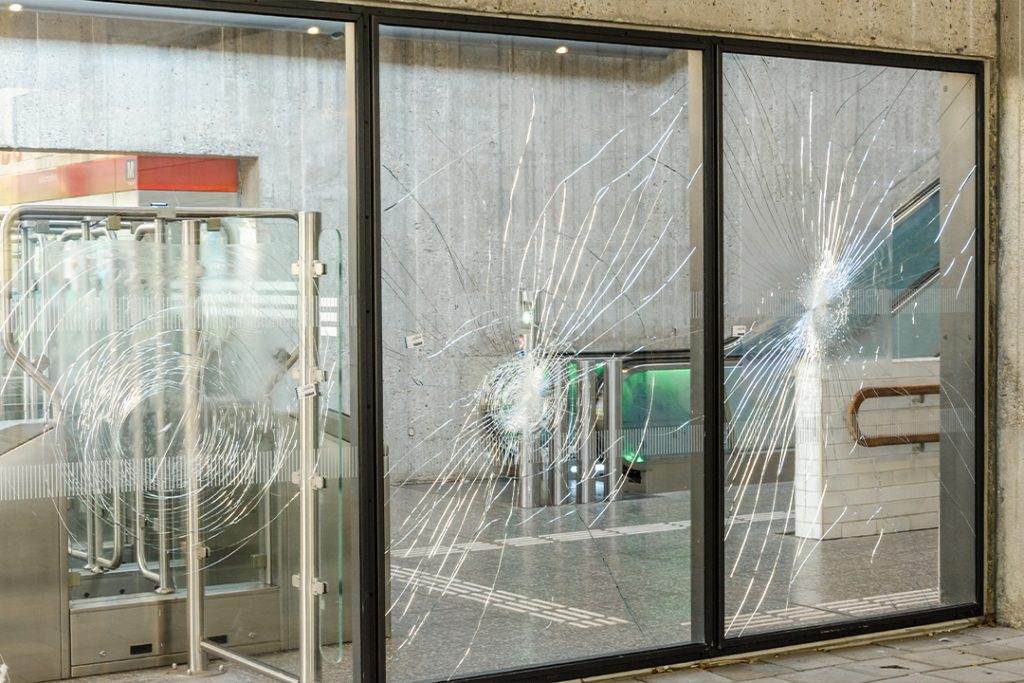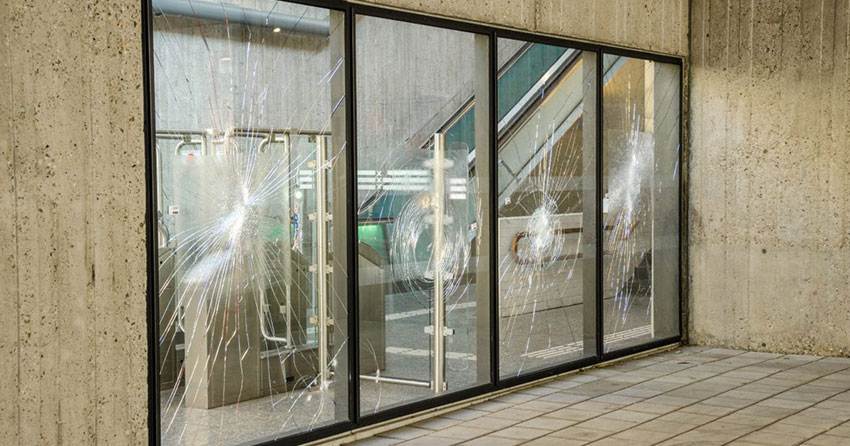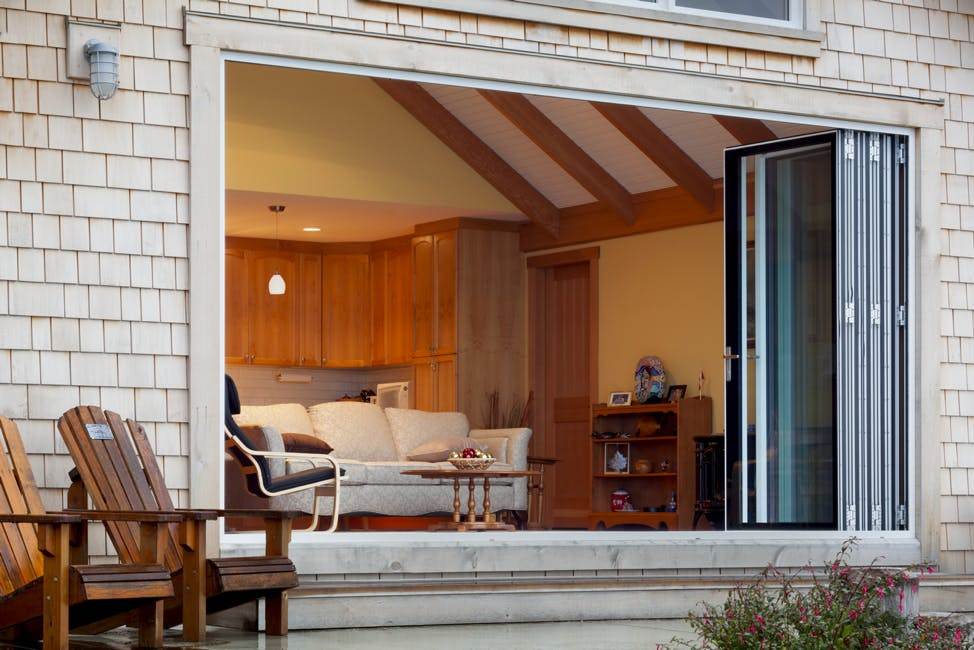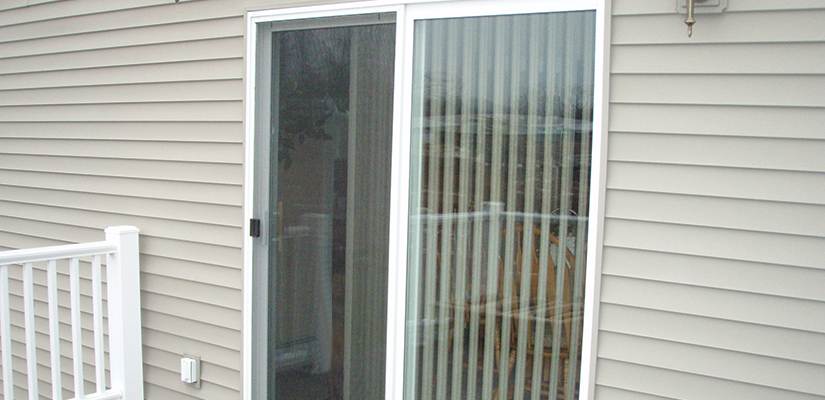In this article, we’ll explore the different types of glass doors that are designed to withstand various conditions without breaking. From tempered glass doors that can handle thermal stress to laminated glass doors that offer enhanced security, we’ll discuss the features and advantages of each. You’ll also learn about impact-resistant doors that are capable of withstanding high-force impacts, such as hurricanes or intruder attempts. So, if you’ve ever wondered what type of glass doors are best suited for specific environments or situations, keep reading to find out!

This image is property of www.windowfilmdepot.com.
Introduction
Glass doors are a popular choice for many homeowners and businesses due to their aesthetic appeal and ability to create an open and inviting space. However, one concern that often arises with glass doors is their durability and safety. In this article, we will explore the different types of safety glass and their characteristics, as well as specialty glass options such as bulletproof glass, fire-rated glass, and soundproof glass. By understanding the various options available, you can make an informed decision when choosing glass doors for your property.
Safety Glass Types
Safety glass is designed to withstand impact and provide greater strength and durability compared to regular glass. There are three main types of safety glass: tempered glass, laminated glass, and wire glass. Each type has its own unique features and applications.
Tempered Glass
Tempered glass is created through a process of heating and rapid cooling, which significantly increases its strength. When tempered glass breaks, it shatters into small, granular pieces rather than sharp shards, reducing the risk of serious injury. Some common applications for tempered glass include shower doors, car windows, and glass tabletops.
Laminated Glass
Laminated glass is made by sandwiching a layer of polyvinyl butyral (PVB) between two or more glass panels. This process creates a strong bond that holds the glass together even when it breaks. Laminated glass is known for its excellent sound insulation and resistance to UV radiation. It is commonly used in windows, skylights, and glass floors.
Wire Glass
Wire glass is made by embedding a wire mesh within the glass during the manufacturing process. This type of glass is highly resistant to impact, making it suitable for areas where safety is a concern. Wire glass is often used in fire-resistant doors and windows, as it helps to prevent the spread of fire and provide added protection.
Tempered Glass
Process of Tempering
The process of tempering involves heating the glass to a high temperature and then cooling it rapidly using blasts of cold air. This rapid cooling creates compressive stresses on the surface of the glass, while the center remains in a tensile state. This balance of stresses makes tempered glass stronger than normal glass.
Characteristics of Tempered Glass
Tempered glass is four to five times stronger than regular glass and can withstand greater impacts without breaking. When it does break, it shatters into small, harmless pieces, reducing the risk of injury. Additionally, tempered glass is resistant to thermal stress, making it suitable for use in areas with extreme temperature changes.
Applications of Tempered Glass
Due to its strength and safety properties, tempered glass is commonly used in various applications. It is often found in shower doors, sliding glass doors, and patio furniture. Tempered glass is also used in car windows, glass tabletops, and some commercial storefront windows.
Laminated Glass
Process of Lamination
Laminated glass is created by bonding two or more glass panels together with a layer of polyvinyl butyral (PVB) in between. The glass and PVB are heated and pressed together to form a strong and durable composite. The PVB layer acts as a bonding agent and holds the glass together even when it breaks.
Properties of Laminated Glass
One of the key properties of laminated glass is its ability to reduce noise transmission. The PVB layer helps to dampen sound waves, making it an excellent choice for areas where noise reduction is important. laminated glass also provides UV protection, blocking out harmful rays that can fade furniture and upholstery.
Uses of Laminated Glass
Laminated glass is commonly used in windows, especially in areas where safety is a concern. It is also used in skylights, glass floors, and glass railings. The soundproofing properties of laminated glass make it a popular choice for recording studios, conference rooms, and other spaces that require a quiet environment.

This image is property of www.defenselite.com.
Wire Glass
Construction of Wire Glass
Wire glass is manufactured by embedding a wire mesh within the glass during the production process. The wire mesh provides additional strength and durability to the glass, making it highly resistant to impact. In the event of breakage, the wire mesh helps to hold the glass together and prevent it from falling apart.
Strength and Durability of Wire Glass
Wire glass is known for its exceptional strength and resistance to impact. It is commonly used in fire-resistant doors and windows, as it helps to contain flames and prevent the spread of fire. The wire mesh also provides additional security, making it difficult for intruders to break through the glass.
Common Applications of Wire Glass
Due to its fire-resistant properties, wire glass is often used in commercial buildings, schools, and other areas where fire safety is a concern. It can be found in fire-rated doors, windows, and glass partitions. Wire glass is also used in areas that require extra protection against break-ins, such as jewelry stores and museums.
Specialty Glass Types
In addition to the standard safety glass options, there are also specialty glass types available that offer specific features and functionality. These include bulletproof glass, fire-rated glass, and soundproof glass.

This image is property of images.nanawall.com.
Bulletproof Glass
How Bulletproof Glass Works
Bulletproof glass, also known as ballistic glass, is designed to withstand the penetration of bullets and other projectiles. It is made by layering multiple sheets of glass with a polymer interlayer, usually made of polycarbonate or polyurethane. This combination creates a strong and resilient barrier that prevents bullets from passing through.
Levels of Bullet Resistance
Bulletproof glass is rated to different levels of bullet resistance based on the ammunition it can withstand. The most common ratings include UL 752, EN 1063, and NIJ standards. Each rating represents a different level of protection, ranging from handguns to high-powered rifles.
Bulletproof Glass Applications
Bulletproof glass is primarily used in high-security environments such as banks, government buildings, and military facilities. It can also be found in vehicles used by law enforcement or transportation of valuable goods.
Fire-rated Glass
Fire-rated Glass Testing
Fire-rated glass undergoes rigorous testing to ensure its ability to withstand exposure to fire and heat. It is tested against standards such as ASTM E119 and UL 263, which measure the glass’s ability to resist the spread of flames and maintain its integrity during a specified time period.
Fire Resistance Ratings
Fire-rated glass is assigned a fire resistance rating based on its ability to withstand exposure to fire. The ratings are given in minutes, indicating the duration the glass can maintain its structural stability and prevent the spread of flames. Common fire resistance ratings include 20 minutes, 45 minutes, and 60 minutes.
Fire-rated Glass Usage
Fire-rated glass is used in buildings to provide a transparent barrier that prevents the spread of fire while allowing for visibility. It is commonly found in fire-rated doors, windows, and partitions. The use of fire-rated glass helps to protect occupants and provides an evacuation route in the event of a fire.
This image is property of qph.cf2.quoracdn.net.
Soundproof Glass
Soundproofing Technologies
Soundproof glass, also known as acoustic glass, incorporates various technologies to reduce noise transmission. It is made by combining multiple glass layers with an intermediate layer of acoustic PVB, along with specialized coatings and laminations. These features help to absorb and dampen sound waves, minimizing noise transfer.
Characteristics of Soundproof Glass
Soundproof glass offers excellent noise reduction properties, making it ideal for environments that require a quiet atmosphere. It can reduce noise levels by up to 50 decibels, providing a peaceful and comfortable space. Additionally, soundproof glass provides optimal thermal insulation, helping to maintain a consistent indoor temperature.
Applications of Soundproof Glass
Soundproof glass is commonly used in residential areas near airports, highways, or busy streets to minimize external noise. It is also used in commercial spaces such as offices, hotels, and hospitals to create a quiet and productive environment. Soundproof glass is particularly beneficial in areas where confidentiality and privacy are important, such as meeting rooms and medical facilities.
Conclusion
When it comes to glass doors, safety and durability are essential considerations. By understanding the different types of safety glass, such as tempered glass, laminated glass, and wire glass, you can choose the option that best suits your needs. Additionally, specialty glass types like bulletproof glass, fire-rated glass, and soundproof glass offer additional features and functionalities for specific applications. Whether you’re looking for strength, resistance to fire, or noise reduction, there is a glass solution available to meet your requirements. invest in quality glass doors that won’t break, providing both safety and style to your space.

This image is property of glassdoctor.com.
